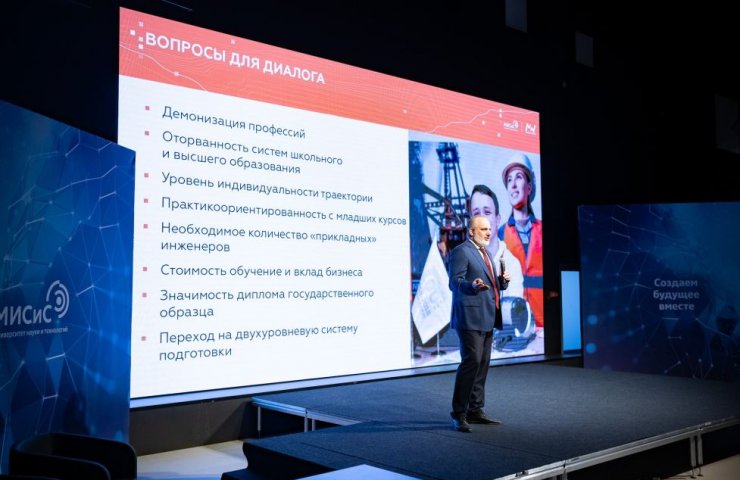Miner's Week is the largest annual scientific and practical mining forum in Russia. The forum will present leading scientific and technical developments, innovations and research of representatives of mining schools in Russia, Europe, Asia and Australia, as well as methods and approaches to solving modern problems of the mining complex. Opening the plenary session of the forum, Chairman of the World Mining Congress, Professor Marek Tsala ( Poland), noted: “Among the main trends in the mining industry that are observed around the world are the transition to low-carbon mining methods, new ways of financing the mining industry, the integration of big data into mining and processing, taking into account geopolitical risks and protectionism, modernizing work processes, including robotization and general digitalization of the sphere. ”According to the expert, given the growth of population, the mining industry is forced to fundamentally expand the areas of development - to switch to deep-sea mining and develop mining technologies in space. Biomining and Urban Mining are becoming alternative methods - the extraction of minerals from e-waste and the processing of waste ores and waste using bioleaching and biooxidation methods. Alexey Knizhnikov, Head of the Environmental Responsibility of Business Program at WWF Russia, during his speech touched upon the topic of interaction between the mining industry and environmental organizations. So, since 2017, there has been a Rating of the openness of environmental information of mining and metallurgical companies in Russia. Knizhnikov noted that the work on the rating helps to increase mutual trust between industry representatives and environmental organizations.
During the meeting of the Scientific Council of the Russian Academy of Sciences on the problems of mining sciences within the framework of the "Miner's Week-2021", experts of the mining industry discussed the issue of innovative convergent technologies in mining as an environmentally friendly alternative to existing ones. The relevance of the topic is due to the problem of extensive growth in the volume of mining waste. “Today, more than 400 billion tons of waste rocks are extracted and stored on the earth's surface every year, often they exceed the volume of the most used mineral,” stressed the director of the Applied Geomechanics and Convergent Mining Technologies Research Center, NUST MISIS, Academician of the Russian Academy of Sciences, Dr. the so-called, Vitaly Eremenko, - If humanity, and primarily mining engineers, do not think about this problem, then in 30-50 years the planet risks turning into a continuous industrial zone and will begin to intensively oppose large-scale man-made human intervention. We are already seeing this in the increase in the number of natural disasters and global climate change. ”One of the possible ways to solve the problem, Professor Eremenko suggests a convergent wireframe method of field development and cell drilling technology. In particular, the research team of the Center is developing the technology of cellular underground mining, which allows not to carry out large-scale blasting operations in the development of powerful deposits, but to extract ore by drilling a series of vertical "pipes". At the same time, the created system is a very stable mountain structure, by analogy with the structure of the bearing load of a porous human bone, a cereal stalk, etc. Among other aspects, the forum discussed the development of world-class international scientific and educational centers (REC), the implementation of which is carried out within the framework of the national project "Science". Alexander Baryakh, director of the Perm Federal Research Center of the Ural Branch of the Russian Academy of Sciences, which is one of the participants in the Perm Regional REC “Rational Subsoil Use”, noted that the model of achieving a truly international level implies cooperation with research organizations, international technical expertise and the development of a scientific and educational ecosystem, contributing to innovative development. REC activities are based on the interaction of government, business, universities and research organizations. They are designed to launch a new stage of cooperation in the field of science, innovation, education, development of the digital economy, as well as stimulate the economic development of their "home" regions. In total, 15 such centers are planned to be opened by 2024. Representatives of the largest diversified and specialized construction organizations, mining companies: Herrenknecht, Nornickel, Mosmetrostroy , Mosinzhproet, Alrosa, Transinzhstroy, Lenmetrogiprotrans, RT-Engineering, etc. “Today, NUST MISIS scientists are carrying out breakthrough projects related to the creation of information models of the Moscow metro facilities, the digital twin of the deepest mine shaft in Eurasia - SKS-1 of the Skalisty mine, which will ensure their safety throughout the entire life cycle





